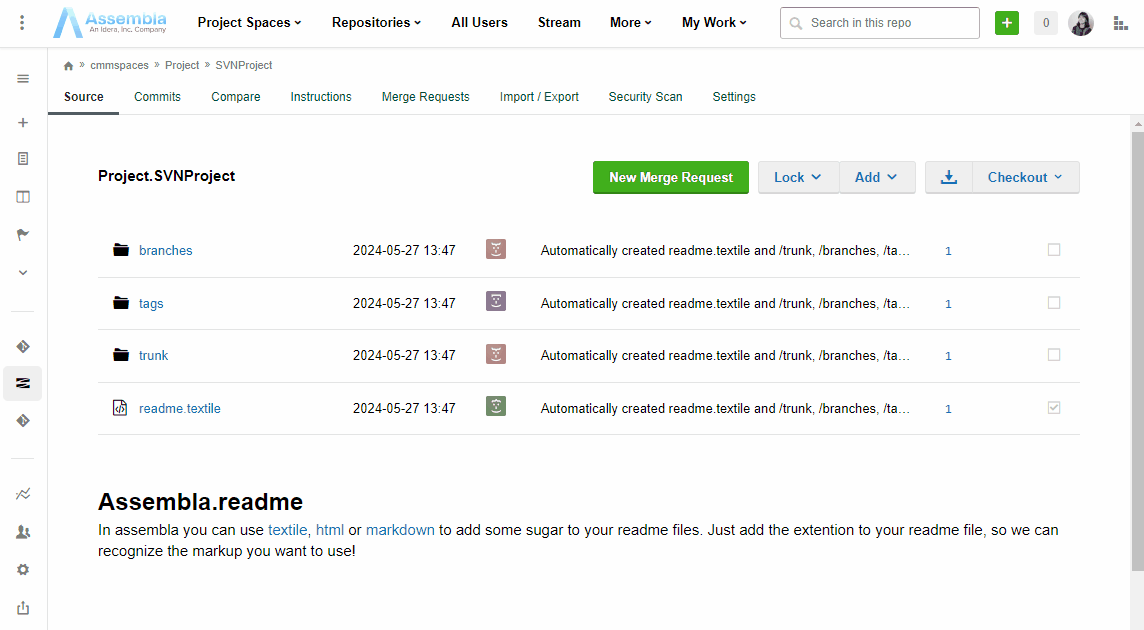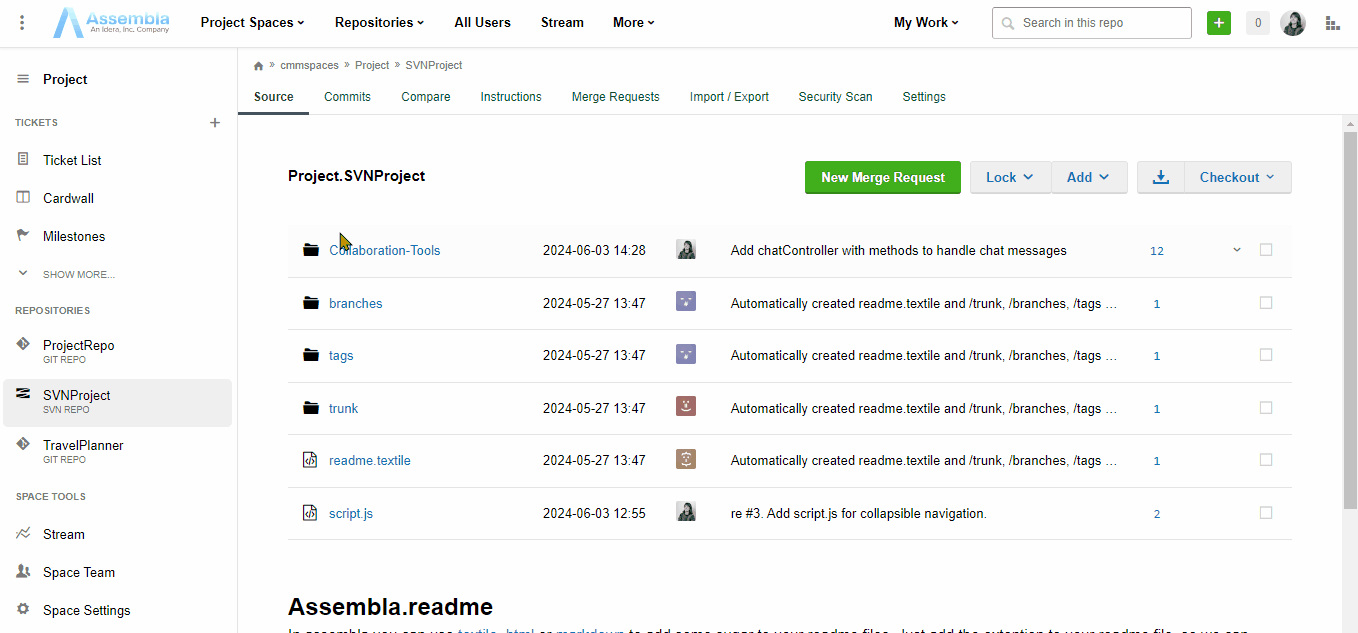
If you’re working with a dev team and decided to use the SVN versioning system, you’ll need to set up the central server that everyone can access and contribute to. In this article, we’ll give you an overview of the primary methods that teams use to set up an SVN server in 2024. We’ll cover manual, more involved setups as well as quicker, out-of-the-box solutions. Keep reading to find the approach that fits your workflow best.
An SVN server is a version control system that helps manage changes to files and directories over time. It allows multiple users to collaborate on projects by tracking changes, maintaining historical versions, and enabling the merging of changes.
You can set up these servers by using different methods. These include manual configurations, the user-friendly package VisualSVN Server, or cloud-based solutions like Assembla for enhanced ease and functionality.
The official SVN documentation provides three primary server configurations:
Each configuration has its strengths and is suited for different team sizes and security requirements. For more specific information, you can visit the official SVN documentation.
However, setting up an SVN server manually involves configuring servers, managing authentication, and overall security, which is complex and time-consuming. For organizations without a dedicated IT team, this diverts developers’ time and focus from their core tasks.
The user-friendly server package VisualSVN Server significantly simplifies this process. It provides a more straightforward experience and lessens the burden of setting up and maintaining.
VisualSVN Server is an easy-to-use SVN server for Windows that streamlines installation and management. Here’s how to set it up:
VisualSVN Server includes a management console that simplifies SVN repository administration and integrates seamlessly with Windows services, providing a robust solution for version control. For more details, visit the VisualSVN Server documentation.
VisualSVN Server doesn’t natively offer a cloud-hosted version or SaaS platform, but you can technically deploy it in a cloud environment. For cloud based SVN, set it up on a virtual machine hosted by a cloud service provider such as AWS, Azure, or Google Cloud.
This approach essentially translates to running your own on-premises solution in a cloud infrastructure, which provides more flexibility in terms of hardware and location. The downside is that this requires managing the server and ensuring it’s properly secured and maintained. All configurations, updates, and maintenance tasks are handled by the user or organization deploying it.
While VisualSVN Server simplifies local setup, Assembla offers the easiest method for setting up a collaborative SVN versioning system in the cloud. Assembla is a cloud-based source code management solution that fully supports SVN projects (as well as Git and Perforce Helix Core).

Assembla includes an robust Agile project management tool that interacts seamlessly with source code repositories. This setup allows teams to manage code and track project progress within a single interface, streamlining workflows along with team communication and collaboration.

As a full-featured SVN hosting platform, in Assembla you’ll also be able to conduct:
Technically, running a cloud based SVN repository with Assembla also offers several benefits over self-hosting. Assembla’s SVN hosting ensures high availability, automatic backups, and scalability without the need for dedicated hardware or extensive IT management. This allows development teams to focus on their projects without worrying about SVN server maintenance and infrastructure issues.
You can sign up for a free trial of Assembla’s source code and project management platform or contact us with custom requests or questions.

